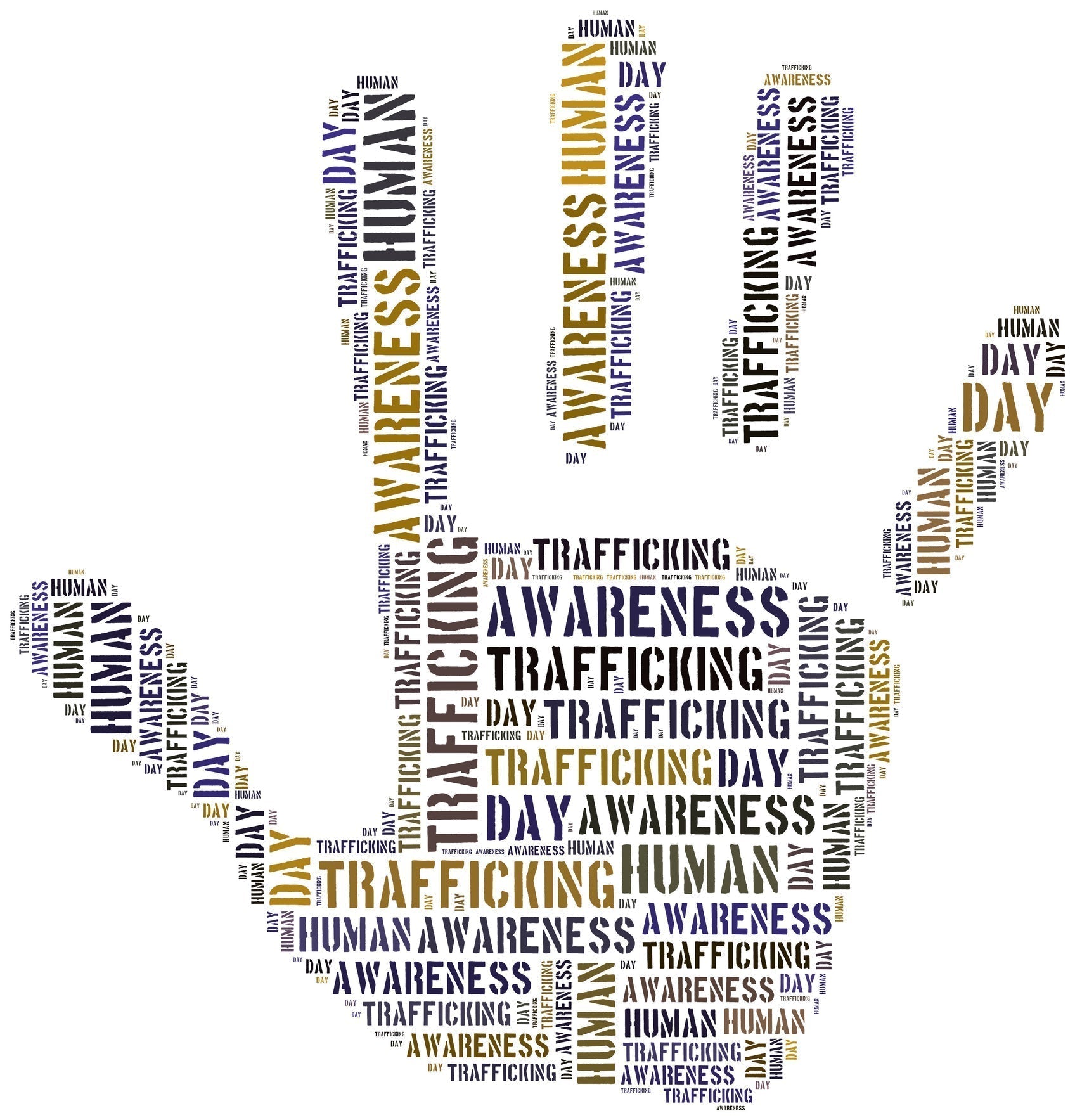July 30, 2023 marks the annual United Nations World Day Against Trafficking in Persons. While it may seem incomprehensible to many of us, every year, all around us, thousands of men, women and children fall into the hands of traffickers both in their own countries and abroad. Whether used for sexual exploitation, forced labor, forced begging, forced marriage, selling children, child labor or even for organ removal, people trafficking is now the third most profitable business for organized crime, following drugs and arms. It's also the fastest growing form of international crime.
As a global business with a passion for supporting the progression of women, and as a community of business people who have frequent exposure to venues where traffickers and victims might be more easily spotted (airports, hotels, public transport), we feel called to bring awareness and education to this issue and to identify ways that we can do our part in ending these horrible crimes being perpetrated against so many vulnerable people.
MODERN DAY SLAVERY – the facts
It can be hard to believe the scale of international human trafficking, but we believe that knowledge is power, so here are some important statistics:
- According to Operation Underground Railroad, the International Labour Organization estimates that there are 40.3 million modern day slaves in the world. One in four of those victims are children, and 71% are women or girls
- According to the UN, sexual exploitation is the most common form of exploitation (59%) followed by forced labor (34%)
- Two million children – the majority of them girls – are sexually exploited in the multi-billion dollar commercial sex industry every year
- Sexual exploitation is the most common form of exploitation (58%) followed by forced labor (34%)
- Most victims are trafficked within their countries’ borders, and those trafficked abroad are often moved to the richest countries
WHAT CAN YOU DO TO HELP?
There are many things we can do to assist in the fight against human trafficking – the greatest is having awareness of the enormity of this crime, acknowledging that it may be happening all around us, and being alert to the signs of traffickers and those being trafficked. Here are some important guidelines:
WHAT DOES A TRAFFICKER LOOK LIKE?
They look like you and me. Traffickers aren't who you think they are, and according to Operation Underground Railroad, they're not as elusive as you may think. “From blue collar to white collar and everything in between, they are boyfriends, doctors, lawyers, teachers, parents, neighbors and family members.” Terrifyingly, 36% of trafficked children are trafficked by a family member, and they say, “If you expand to include intimate partners and friends, that number jumps to 56%. According to the global data set, more children are trafficked by family members for sexual exploitation than for forced labor.”
And while the majority of people think that traffickers are men, in fact 38% of convicted traffickers are women.
HOW TO SPOT THE SIGNS OF TRAFFICKING
According to Katie Amodei, Communications manager at BEST (Businesses Ending Slavery and Trafficking) she says, “The story of human trafficking is not about how he or she is rescued. It is the end result of many years of vulnerabilities that have gone unnoticed and unaddressed.”
Amodei continues, “People who are susceptible to human trafficking have experienced vulnerabilities, including neglect, poverty, homelessness, family breakdown, disability, addiction, or a history of physical or sexual abuse. Traffickers look for these vulnerabilities and then groom their victims to convince, coerce, or force them into situations that victims do not want and can quickly become trapped in.”
It's important, she explains, to understand some of the tactics that traffickers use in order to understand why their victims don’t ask for help. “Traffickers will often threaten or use violence towards the victim or the victim’s family, threaten deportation, restrict contact with others, make false promises, or deprive the victim of basic needs if they do not do as instructed.”
INDICATORS OF TRAFFICKING
In 2020, the United Nations took an important step forward with the launch of some online training guidance in association with the ICAO (International Civil Aviation Organization) to help cabin crew identify and respond to the signs of trafficking. There is much that we can all learn from it, and below are some questions that we can apply to all communities, schools and workplaces that may indicate signs that a person is in trouble:
- Does the person appear disconnected from family, friends, community organizations or houses of worship?
- Has the person had a sudden or dramatic change in behavior?
- Is a juvenile engaged in commercial sex acts?
- Is the person disoriented or confused, or showing signs of psychological abuse?
- Does the person have bruises in various stages of healing?
- Is the person fearful, anxious, depressed, timid, submissive or nervous/paranoid?
- Does the person show signs of having been denied food, water, sleep or medical care?
- Does the person show signs of physical and/or sexual abuse, physical restraint, confinement or torture?
- Is the person often in the company of someone to whom he or she defers, or someone who seems to be in control of the situation (e.g. where they go or to whom they speak)?
- Does the person appear to be coached on what to say or adhering to a scripted or rehearsed response?
- Is the person working excessively long and/or unusual hours?
- Does the person lack personal possessions and appear not to have a stable living situation?
- Does the person have freedom of movement? Can the person freely leave where they live? Are there unreasonable security measures?
- Are there persons with identical tattoos in similar locations which may indicate “branding” by a trafficker?
TRAFFICKING SIGNS TO LOOK OUT FOR WHEN TRAVELING
The below are warning signs that the ICAO has shared with cabin members. It's helpful that we all know them when we're traveling to increase public awareness of trafficking.
Does the person…
- Avoid eye contact and social interaction?
- Avoid and distrust authority figures/law enforcement?
- Seem not in control of his/her documentation and/or have false identity or travel documents?
- Do they have a language barrier with the person he/she is traveling with?
- Do they have no money, personal items or carry-on baggage?
- Are they not wearing appropriate clothing or his/her appearance may not fit the route of travel or weather?
- Do they come from a location or state known as a source or destination for trafficking in persons?
- Are they unaware of his/her final destination and travel plans in general?
- Are they unusually submissive to the person he/she is traveling with?
- Are they not allowed to speak for his/herself and if directly addressed, e.g. someone else insists on answering/translating for him/her?
- Do they provide inconsistent responses from person(s) traveling with him/her when asked questions?
- Do they not have the freedom on the aircraft/ carrier to separate him/herself from others (e.g. to use the lavatory unaccompanied)?
- Do they speak of a modeling, dancing, singing, or hospitality job, or something similar in a foreign country (without knowing who will be meeting him/her upon arrival, and with few details about the job?)
- Do they exhibit unusual behavior that just does not seem right to the crew member?
EMPLOY THE CONCEPT OF ‘DO NO HARM’
If you fear that someone may be being trafficked, it's highly important that you employ the concept of ‘Do no harm’ to ensure that the potential victim is not further jeopardized and as well as to ensure your own safety. The ICAO have worked with the UN to come up with the following advice on acting on your suspicions:
- Be discreet with the discussion and relaying of information so as not to raise suspicion
- Do not confront the trafficker
- Do not attempt to rescue the victim
- Act normally. Do not display unusual concern or alarm
The advice from BEST is that if you witness what you think is a trafficking situation in the US, you can report it to the National Human Trafficking Hotline and they can direct the situation to local law enforcement or social service agencies.
Call 1-888-373-7888
Text BeFree (233733)
Email: help@humantraffickinghotline.org
Anytime a child is involved in a commercial sex act or if a child is in danger, call 911 (or local emergency services) immediately.
To join the movement and support the nonprofit work to help prevent human trafficking, you can donate to Businesses Ending Slavery and Trafficking.
CHILD TRAFFICKING AT HOME
While the general perception is that trafficking happens at airports and at borders, it could potentially be occurring at home or in peoples’ homes close to you. In fact, according to a 2018 survivor survey, 14% of survivors met their trafficker online. According to the O.U.R., child traffickers have learned to harness the full powers of the internet.
With so many children these days having such easy access to the internet, it's very easy for predators to engage with children online, often when posing as people of the child’s age. O.U.R. also states that in addition to being groomed online, thousands of children are actually sold online with predators taking advantage of child exploitation material that they send far and wide. One man in South East Asia, they report, was recently found to be selling child exploitation material from his own children to 14,000 subscribers.
This is not a problem that’s restricted to impoverished countries. The Internet Watch Foundation reports that Europe is in fact the top host of child exploitation imagery, with North America in second place. A sad fact is that the IWF assess web pages every two minutes and they find a webpage every five minutes where a child is being sexually abused.
The greatest advice is to talk to your children about the dangers of online, report suspicious activity and educate yourself.
Some important resources to look up are:
WHAT ELSE CAN WE DO?
Please share this article in any way you can, because the more people that are aware and that know the signs, the more we can end these horrific crimes.
For more information on human trafficking, head to UN.org, BESTalliance.org and www.ourrescue.org



